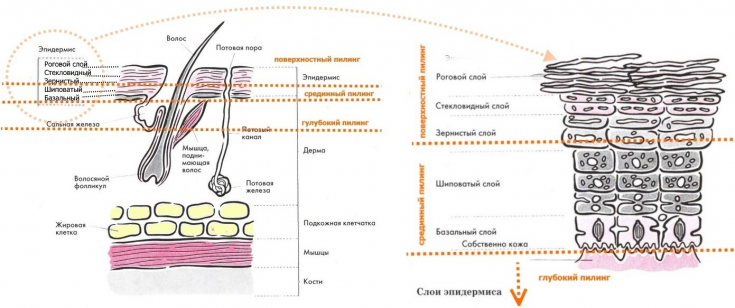One of the most famous superficial peels is peeling based on salicylic acid. The advantage of this procedure for patients is that it does not require long-term rehabilitation, but it has an amazing effect.
Some people do salicylic peeling on their own, however, the procedure in the salon, under the close supervision of a doctor, will not only minimize the risks of side effects, but also make the peeling more effective. On estet-portal.com read about the main rules for effective peeling with salicylic acid.
Preparation for superficial peeling with salicylic acid
Proper selection of patients and evaluation of each individual's skin condition is a prerequisite for performing a chemical peel. Before the procedure, it is necessary to take a detailed history and conduct a thorough examination of the patient.
In dermatology, a fairly large number of schemes are used to prepare for peeling. Topical tretinoin, α-hydroxy acids, hydroquinone, kojic acid and low-potency steroids are used to cleanse the skin before the procedure. Patients are advised to stop smoking, minimize UV exposure and use sunscreen.
Benzoyl peroxide and topical antibiotics may also be used prior to salicylic peels, however, the drugs should be discontinued 1 or 2 days prior to the procedure.
Topical retinoids are applied 2-6 weeks prior to peeling to enhance epidermal cell renewal, reduce melanin content and accelerate epidermal healing. The use of these drugs should be stopped a few days before the peeling procedure. When treating conditions such as melasma, post-inflammatory hyperpigmentation and acne, as well as when dealing with darker skin types, retinoids should be discontinued 1 or 2 weeks before peeling or completely excluded from the preparation regimen to avoid complications such as excessive erythema, desquamation and post-inflammatory hyperpigmentation.
Read the latest articles in Telegram!
4% hydroquinone is used to prepare the skin of patients with pigmentary dyschromia, for this it is applied twice a day for 2-4 weeks before peeling and resumed 2 days after it. This combination leads to a significant reduction in the intensity of hyperpigmentation.
Acid peels: the anatomy of a chemical peel

Peculiarities of the peeling procedure with salicylic acid
A standard salicylic acid chemical peel treatment involves using a 20% or 30% salicylic acid solution in alcohol. It is advisable to perform an initial peel with a 20% solution to assess the sensitivity and reactivity of the patient's skin to the exfoliating agent.
Before peeling, the face should be thoroughly cleansed to degrease the skin. Typically, applicators with a cotton swab and gauze sponges are used to apply peeling. During the procedure, 2-3 layers of salicylic acid are applied first on the cheeks, then on the perioral area, chin and forehead. After that, the peeling is left for 3-5 minutes. During the procedure, most patients complain of a slight burning sensation.
The burning sensation during a salicylic peel can be reduced with a portable hand fan or ice packs.
Salicylic peeling does not require neutralization, and after 3-5 minutes the face is simply rinsed thoroughly with water, after which a mild moisturizer is applied to the skin.
Superficial peeling: how not to deceive the patient's expectations

Care after peeling with salicylic acid
Mild moisturizers and cleansers should be used for the first 48 hours after peeling. The patient can then use their usual skin care products again. For excessive desquamation and irritation in the post-peel period, topical steroids may be used.
Topical steroids have been shown to be effective in reducing inflammation and post-inflammatory hyperpigmentation after peeling.
Thus, by following the simple algorithm of the salicylic peeling procedure, the doctor can easily help the patient solve many dermatological problems.
What can a chemical peel do in skincare







Add a comment